Navigating Cancer Pain Management in the Midst of the Opioid Epidemic
Two public health crises, the epidemics of chronic pain and of opioid misuse, are creating challenges for cancer pain management.
Oncology (Williston Park). 32(8):386-90, 403.

Table 1. Chronic Pain Syndromes Associated With Cancer Treatment
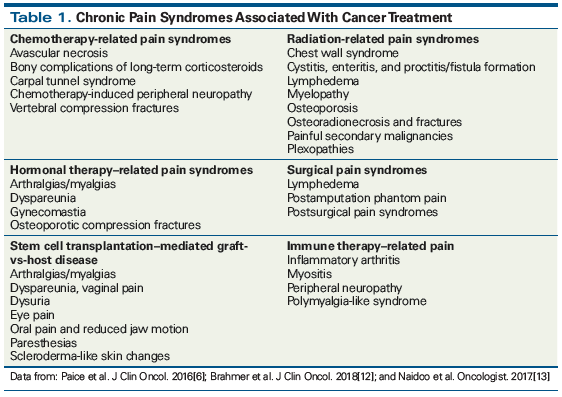
Table 2. Multimodal Pain Therapies
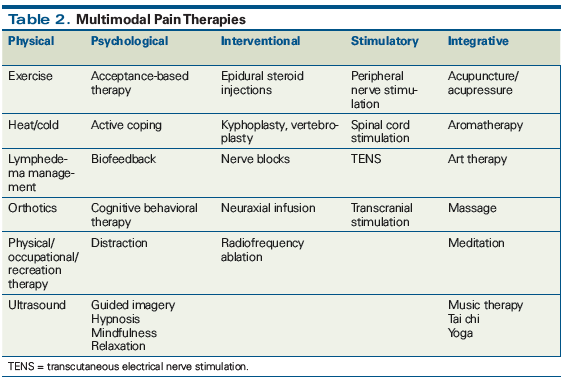
Table 3. Risk Factors for Substance Use Disorders
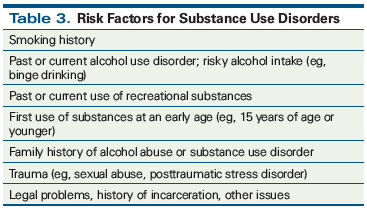
Table 4. Universal Precautions for Opioid Use in Chronic Cancer Pain Management

Table 5. Strategies for Streamlining Opioid Prescribing in Oncology Practices
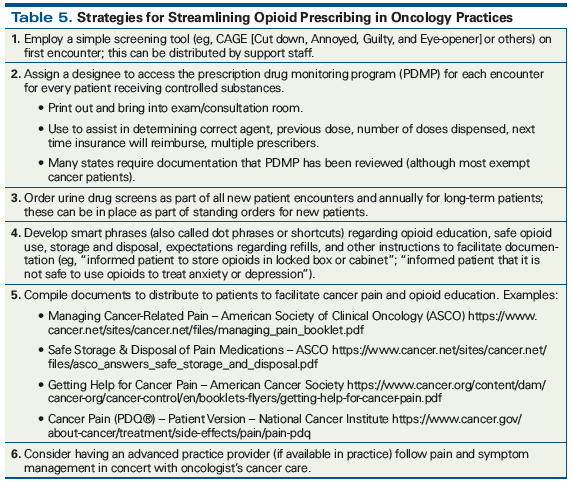
Table 6. Managing Chronic Noncancer Pain in the Oncology Setting
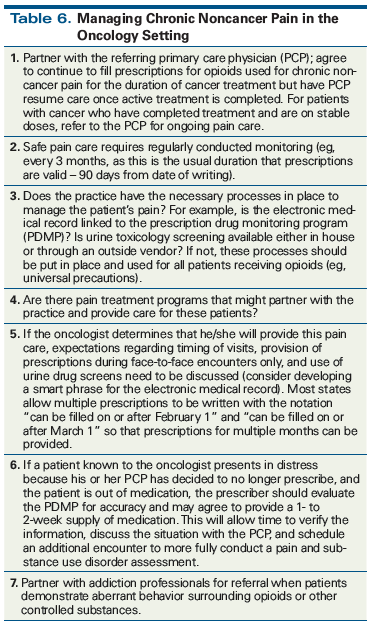
Cancer pain remains prevalent throughout the course of the disease, and it can be challenging to manage adequately. The challenge is compounded by the current opioid misuse epidemic. Substance use disorders (SUDs), including opioid use disorder, are common in the general population and may be seen with greater frequency in oncology settings. Risk factors contributing to the development of cancer, such as smoking or excessive drinking of alcohol, may place some patients at increased risk for SUDs. Additionally, cancer patients have a higher rate of psychological distress than the general population; psychological distress is an important risk factor for SUDs. Careful assessment of pain, function, and risk factors for SUDs, along with physical examination and review of imaging findings, are strategies to define the etiology of pain and guide development of a treatment plan. Multimodal pain therapies are warranted to reduce reliance solely on opioids, and universal precautions are essential to mitigate risk of misuse. Complex care is required for those with comorbid chronic noncancer pain or with past or current SUDs.
Introduction
Cancer patients commonly suffer from pain that is difficult to manage. Compounding this challenge are two public health crises: widespread chronic pain in the general population and the current opioid misuse epidemic.[1-4] Oncology professionals are seeing more patients with cancer and concomitant chronic pain that has often been inadequately managed or managed with high doses of opioids. Additionally, the number of people with a current or past substance use disorder (SUD) who also require cancer treatment is increasing.[5] Furthermore, cancer therapies can lead to pain conditions that seriously compromise quality of life.[6] Oncologists, oncology nurses, and others in this field are at the nexus of these converging challenges and often report little preparation for the safe and effective care of these patients with complex needs. Heightening the complexity of caring for those with cancer and pain is the challenge in navigating access to all pain treatments, particularly to opioid therapy.[7,8]
Prevalence of Cancer Pain
More than half of people with cancer report experiencing pain in the previous week, with 44% describing moderate to severe pain.[9] For those receiving curative-intent therapy, the prevalence of moderate to severe pain ranged from 43% to 57% and up to 75% in those with advanced disease.[9] A systematic review of the cancer pain literature revealed pain prevalence rates of 39% after curative treatment, 55% during treatment, and 66% in those with metastatic disease.[9,10] As advances in diagnosis and treatment expand, so too are survival rates. Estimates suggest that there are now 14 million cancer survivors in the United States, and therefore, the number of people with cancer living with pain is believed to be increasing.[11] Many of these persistent pain states are complications of cancer therapies (Table 1).[6,12,13] The consequences of unrelieved cancer pain include difficulties with daily activities, emotional distress, and impaired quality of life.[14-17] Oncology professionals realize the urgency in comprehensively treating cancer pain, yet face numerous regulatory, financial, institutional, and legal obstacles.[18]
Prevalence of Chronic Pain
Approximately 100 million American adults experience chronic pain.[1] In “Relieving Pain in America: A Blueprint for Transforming Prevention, Care, Education, and Research,” the Institute of Medicine outlines the public health burden of chronic pain along with strategies for improvement.[1] The National Pain Strategy provides a framework for comprehensive management of chronic pain.[19] Unfortunately, chronic pain remains poorly managed, in part due to limited access to multidisciplinary treatment that is not limited to pharmacologic management, but also includes physical, psychological, interventional, stimulatory, and integrative therapies (Table 2).[20] Reimbursement, inadequate numbers of specialists, and lack of awareness remain serious obstacles to the use of these treatments.
Prevalence of Substance Use Disorder
Another serious public health concern is the rising prevalence of misuse of opioids and resultant opioid-related deaths. According to the 2015 National Survey on Drug Use and Health, 91.8 million (37.8%) adults in the United States used prescription opioids, 11.5 million (4.7%) misused these drugs, and 1.9 million (0.8%) had an SUD.[3] Most respondents stated that their primary motivation for misuse was to relieve physical pain (63.4%). Those at greatest risk for misuse were individuals who were socioeconomically disadvantaged (eg, uninsured, unemployed, low income) or had behavioral health issues. Risk factors for SUDs are listed in Table 3.
Daily reports in the media highlight the fallout of this rise in substance misuse. Drug overdoses accounted for 52,404 deaths in the US in 2015, and 33,091 (63%) of these involved an opioid.[21] Other psychoactive substances, including benzodiazepines, are often implicated in fatal overdoses, yet coprescribing of opioids and benzodiazepines has increased significantly in the last few years.[2,22,23] Zolpidem and eszopiclone, which are frequently prescribed for cancer patients for pain, anxiety, antiemesis, and sleep, are also associated with increased risk of death when used with other sedating drugs.[23]
Prevalence of SUDs in Oncology
The prevalence of SUDs in cancer is unknown. Approximately 9% of Americans meet the diagnostic criteria for SUDs, so oncology practices likely provide care for more than a few of these individuals. In fact, cancer may place some patients at higher risk for SUDs than the general population because of their higher rate of psychological distress, which is an important risk factor for SUDs.[24] In a study of cancer patients screened to assess for risk of SUDs, 29% were found to be at high risk. Younger individuals and those with high levels of anxiety/depression were at greatest risk.[25] Advanced cancer patients who were current or former smokers had a higher risk of illicit drug use.[26] Using the CAGE questionnaire (Cut down, Annoyed, Guilty, and Eye opener), a prospective study of advanced cancer patients found that approximately 18% met criteria for chemical coping. Chemical coping places the patient at risk for using an opioid in a nonprescribed manner to cope with stressors.[5] Therefore, it is probable that people with cancer may have similar or even higher risk of SUDs than the general population.
Strategies for Oncology
Oncology professionals are faced with an extraordinary dilemma. How do we safely and effectively manage pain to allow full function and improved quality of life in our patients while reducing the potential for unsafe use of opioids? Opioids are essential pain management agents, yet there are risks inherent in their use. Core approaches include careful assessment of pain, medication use, function, and risk of SUD. When developing a treatment plan, reliance on multimodal pain therapy is crucial, rather than use of opioids alone. Universal precautions are essential measures to guide prescribing of agents with abuse potential to mitigate the risk of addiction and misuse.
Assessment
A comprehensive assessment should be conducted to discern the organic etiology of the pain. Review medical records and imaging results and conduct a full examination - all components of excellent oncology care. Function is a vital component of this assessment and will guide the goal of pain interventions. It may be helpful to ask, “If we can do a better job with pain control, what will you be able to do that you cannot do now?” This helps focus the patient and provider on the expected outcome of improved function, which can be used as a measure of efficacy for treatment strategies. Function will of course vary, depending on prognosis and disease burden. Some patients may aim to return to work, while others will hope to be able to hold a grandchild or sit with their loved ones and enjoy a meal.
A comprehensive review of pain medications, current and past, should note any adverse effects, challenges with obtaining medications, and reasons for discontinuing. An important measure of opioid use is actual intake versus prescribed dose. Many patients may have an immediate-release opioid ordered every 3 hours as needed, yet take only 1 dose per 24 hours, even in the face of ongoing pain. Is the patient limiting intake due to fears of addiction, cost concerns, or family reluctance, or are there other barriers that may be leading to underdosing?[27] The prescription drug monitoring program (PDMP) is extremely helpful in evaluating dispensing information. Currently, 49 states have PDMPs, and many allow access to information from other states. Use of these programs has been shown to reduce nonmedical use of opioids.[3,28-30]
Assessing risk factors for SUDs is part of comprehensive pain assessment (Table 3). Some advocate for the use of screening questionnaires to evaluate risk of SUDs, while others incorporate these questions into the interview. Urine toxicology can determine intake of substances that have not been prescribed, or conversely, the absence of positive results when an opioid has been prescribed. Careful interpretation of the results is warranted, as there are many false-positives and false-negatives.[31,32] Although some professionals view aberrant results as a reason to “fire” a patient from their practice, unexpected findings should initiate a thoughtful conversation between prescriber and patient. This may be motivating for the patient who is already concerned about his or her behavior and willing to take action towards sobriety.
Management
Universal precautions, a term initially used in infection control, describe techniques to be applied to all patients when opioids are considered as part of the treatment plan. This stepwise approach (Table 4) should be incorporated into the care of all patients who will receive an opioid, not just those perceived to be at risk for misuse. Because of implicit bias, people who are socioeconomically disadvantaged may not be fully believed when reporting pain and often receive less than adequate pain control.[33,34] In a study of people being treated for cancer pain, minority patients were twice as likely to be undertreated when compared with non-Hispanic whites.[35]
Complex Care
Pain management has become more difficult in the oncology setting as a result of these convergent public health problems. Table 5 lists some strategies for reducing the complexity by streamlining safe opioid prescribing in a busy oncology practice. Additional complexities persist and new challenges develop regularly. Unintended consequences of efforts to mitigate the opioid abuse epidemic are leading to shortages of opioids in both inpatient and outpatient settings and delays in access as a result of reimbursement obstacles in the form of prior authorizations. Reduced production quotas set by the Drug Enforcement Administration,[36] along with other factors, have led to shortages of parenteral fentanyl, hydromorphone, and morphine. Hospitals are limiting their use to avoid running out, and are encouraging use of oral opioid and nonopioid agents.[37] Third-party payers often require prior authorizations, which can delay access to medication, and in some cases abstinence syndrome may result.[7] Many of these plans are setting limits on medications, dosing formulations, and numbers of tablets/patches to be dispensed, even for those with cancer or other life-limiting diagnoses.
Patients With Chronic Noncancer Pain
Another consequence of the current environment is that many medical professionals and practices no longer prescribe opioids.[38] As a result, patients with chronic noncancer pain being treated with opioids who are also in cancer treatment may ask their oncologist to prescribe these medications. Table 6 provides suggestions for managing chronic pain in oncology practices that want to offer compassionate care for patients who are abandoned by other providers. As each setting is unique, these recommendations may not be feasible for all practices.
Patients With Previous or Current SUD
The person with SUD may have difficulty adhering to the cancer treatment plan, in part due to limited coping strategies.[39] Thus, attention to measures that enhance recovery from an SUD may also improve cancer outcomes. The person with a history of alcohol or drug use who is scheduled to undergo potentially painful cancer treatments should be encouraged to initiate, resume, or continue contact with the supports that have fostered their sobriety, such as 12-step programs and regular meetings with sponsors. Exercise, sleep hygiene, and healthy eating should also be encouraged. Unfortunately, aggressive cancer treatments can interfere with many of these activities and additional support may be warranted. Availability of additional support will depend on the resources of practices and communities, which may be limited.
For the person who is in medication-assisted therapy (MAT), contact the treatment clinics to alert them regarding the planned oncology treatment. In my experience, some programs will increase supportive measures knowing that the patient will be under additional stress. If opioids and/or benzodiazepines are part of the cancer treatment plan, discuss with program staff the need for these medications to ensure that patients are not discharged when their urine drug screens are positive. Additionally, if patients are on methadone or buprenorphine for MAT, use an alternate opioid for pain control.[39] Some patients develop tolerance to the analgesic effect of opioids, usually necessitating a higher dose when prescribing for pain. On a regular basis, monitor for potential drug-drug interactions and also for possible QTc prolongation by obtaining electrocardiograms.[40,41] Negotiate with MAT treatment clinics, particularly those administering methadone, to allow less frequent visits (eg, weekly, rather than daily) if the patient's physical functioning declines because of cancer or its treatment.
In my experience, many patients in prolonged and successful recovery deeply value their sobriety and are hesitant to use opioids unless absolutely necessary. For patients with less prolonged recovery, constant reassessment of pain, medication use, and evidence of aberrant behavior is warranted. Addiction is a relapsing and remitting disease. Clear, nonjudgmental communication and education are essential. For patients who continue to use illicit substances, referral to psychiatry and/or addiction specialists is essential. For the patient with advanced disease and a significant disease burden, mitigation strategies may include prescription of very small amounts of drug at a time, engaging family members to dispense medications, or admission to a facility (eg, nursing home) where professionals administer opioid therapies. Currently, there are no guidelines for pain management in people with cancer and a comorbid SUD.
Conclusion
Two public health crises, the epidemics of chronic pain and of opioid misuse, are creating challenges for cancer pain management. Assessment of pain, function, and risk for SUD, along with the implementation of universal precautions, provide a foundation for safe and effective care. Strategies for safe opioid use should also consider the danger of benzodiazepines and other sedating agents. Education about safe storage and disposal should be offered to patients and families. Evidence-based guidelines are needed to guide practice.
Financial Disclosure:The author has no significant financial interest in or other relationship with the manufacturer of any product or provider of any service mentioned in this article.
References:
1. Relieving pain in America: a blueprint for transforming prevention, care, education, and research. Washington, DC: Institute of Medicine; 2011. p. 19-28.
2. Kandel DB, Hu MC, Griesler P, Wall M. Increases from 2002 to 2015 in prescription opioid overdose deaths in combination with other substances. Drug Alcohol Depend. 2017;178:501-11.
3. Han B, Compton WM, Blanco C, et al. Prescription opioid use, misuse, and use disorders in U.S. adults: 2015 national survey on drug use and health. Ann Intern Med. 2017;167:293-301.
4. Paice JA. Cancer pain management and the opioid crisis in America: how to preserve hard-earned gains in improving the quality of cancer pain management. Cancer. 2018;124:2491-7.
5. Kwon JH, Tanco K, Park JC, et al. Frequency, predictors, and medical record documentation of chemical coping among advanced cancer patients. Oncologist. 2015;20:692-7.
6. Paice JA, Portenoy R, Lacchetti C, et al. Management of chronic pain in survivors of adult cancers: American Society of Clinical Oncology clinical practice guideline. J Clin Oncol. 2016;34:3325-45.
7. Paice JA. Under pressure: the tension between access and abuse of opioids in cancer pain management. J Oncol Pract. 2017;13:595-6.
8. Tanco K, Bruera SE, Bruera E. Insurance company denial of payment and enforced changes in the type and dose of opioid analgesics for patients with cancer pain. Palliat Support Care. 2014;12:515-8.
9. van den Beuken-van Everdingen MH, de Rijke JM, Kessels AG, et al. High prevalence of pain in patients with cancer in a large population-based study in The Netherlands. Pain. 2007;132:312-20.
10. van den Beuken-van Everdingen MH, Hochstenbach LM, Joosten EA, et al. Update on prevalence of pain in patients with cancer: systematic review and meta-analysis. J Pain Symptom Manage. 2016;51:1070-90.
11. Glare PA, Davies PS, Finlay E, et al. Pain in cancer survivors. J Clin Oncol. 2014;32:1739-47.
12. Brahmer JR, Lacchetti C, Schneider BJ, et al. Management of immune-related adverse events in patients treated with immune checkpoint inhibitor therapy: American Society of Clinical Oncology clinical practice guideline. J Clin Oncol. 2018;36:1714-68.
13. Naidoo J, Cappelli LC, Forde PM, et al. Inflammatory arthritis: a newly recognized adverse event of immune checkpoint blockade. Oncologist. 2017;22:627-30.
14. Breivik H, Cherny N, Collett B, et al. Cancer-related pain: a pan-European survey of prevalence, treatment, and patient attitudes. Ann Oncol. 2009;20:1420-33.
15. O'Connor M, Weir J, Butcher I, et al. Pain in patients attending a specialist cancer service: prevalence and association with emotional distress. J Pain Symptom Manage. 2012;43:29-38.
16. Hamood R, Hamood H, Merhasin I, Keinan-Boker L. Chronic pain and other symptoms among breast cancer survivors: prevalence, predictors, and effects on quality of life. Breast Cancer Res Treat. 2018;167:157-69.
17. Green CR, Hart-Johnson T, Loeffler DR. Cancer-related chronic pain: examining quality of life in diverse cancer survivors. Cancer. 2011;117:1994-2003.
18. Kwon JH. Overcoming barriers in cancer pain management. J Clin Oncol. 2014;32:1727-33.
19. Department of Health and Human Services. National pain strategy: a comprehensive population health strategy for pain. https://iprcc.nih.gov/sites/default/files/HHSNational_Pain_Strategy_508C.pdf. Accessed July 7, 2018.
20. Janke EA, Cheatle M, Keefe FJ, et al. Society of Behavioral Medicine (SBM) position statement: improving access to psychosocial care for individuals with persistent pain: supporting the National Pain Strategy's call for interdisciplinary pain care. Transl Behav Med. 2018;8:305-8.
21. Rudd RA, Seth P, David F, Scholl L. Increases in drug and opioid-involved overdose deaths - United States, 2010-2015. MMWR Morb Mortal Wkly Rep. 2016;65:1445-52.
22. Bachhuber MA, Hennessy S, Cunningham CO, Starrels JL. Increasing benzodiazepine prescriptions and overdose mortality in the United States, 1996-2013. Am J Public Health. 2016;106:686-8.
23. Lembke A, Papac J, Humphreys K. Our other prescription drug problem. N Engl J Med. 2018;378:693-5.
24. Mitchell AJ, Ferguson DW, Gill J, et al. Depression and anxiety in long-term cancer survivors compared with spouses and healthy controls: a systematic review and meta-analysis. Lancet Oncol. 2013;14:721-32.
25. Koyyalagunta D, Bruera E, Aigner C, et al. Risk stratification of opioid misuse among patients with cancer pain using the SOAPP-SF. Pain Med. 2013;14:667-75.
26. Kim YJ, Dev R, Reddy A, et al. Association between tobacco use, symptom expression, and alcohol and illicit drug use in advanced cancer patients. J Pain Symptom Manage. 2016;51:762-8.
27. Kwon JH, Tanco K, Hui D, et al. Chemical coping versus pseudoaddiction in patients with cancer pain. Palliat Support Care. 2014;12:413-7.
28. Ali MM, Dowd WN, Classen T, et al. Prescription drug monitoring programs, nonmedical use of prescription drugs, and heroin use: evidence from the National Survey of Drug Use and Health. Addict Behav. 2017;69:65-77.
29. Pardo B. Do more robust prescription drug monitoring programs reduce prescription opioid overdose? Addiction. 2017;112:1773-83.
30. Centers for Medicare and Medicaid Services. Best practices for addressing prescription opioid overdoses, misuse and addiction. https://www.medicaid.gov/federal-policy-guidance/downloads/cib-02-02-16.pdf Accessed July 7, 2018.
31. Christo PJ, Manchikanti L, Ruan X, et al. Urine drug testing in chronic pain. Pain Physician. 2011;14:123-43.
32. Peppin JF, Passik SD, Couto JE, et al. Recommendations for urine drug monitoring as a component of opioid therapy in the treatment of chronic pain. Pain Med. 2012;13:886-96.
33. Anderson KO, Mendoza TR, Valero V, et al. Minority cancer patients and their providers: pain management attitudes and practice. Cancer. 2000;88:1929-38.
34. Cleeland CS, Gonin R, Baez L, et al. Pain and treatment of pain in minority patients with cancer. The Eastern Cooperative Oncology Group Minority Outpatient Pain Study. Ann Intern Med. 1997;127:813-6.
35. Fisch MJ, Lee JW, Weiss M, et al. Prospective, observational study of pain and analgesic prescribing in medical oncology outpatients with breast, colorectal, lung, or prostate cancer. J Clin Oncol. 2012;30:1980-8.
36. Drug Enforcement Agency. Established aggregate production quotas for schedule I and II controlled substances and assessment of annual needs for the list I chemicals ephedrine, pseudoephedrine, and phenylpropanolamine for 2017. https://www.federalregister.gov/documents/2016/10/05/2016-23988/established-aggregate-production-quotas-for-schedule-I-and-II-controlled-substances-and-assessment. Accessed July 11, 2017.
37. US Food and Drug Administration. FDA drug shortages. Current and resolved drug shortages and discontinuations reported to FDA. https://www.accessdata.fda.gov/scripts/drugshortages/default.cfm. Accessed March 6, 2018.
38. Comerci G, Jr., Katzman J, Duhigg D. Controlling the swing of the opioid pendulum. N Engl J Med. 2018;378:691-3.
39. Compton P, Chang YP. Substance abuse and addiction: implications for pain management in patients with cancer. Clin J Oncol Nurs. 2017;21:203-9.
40. Chou R, Cruciani RA, Fiellin DA, et al. Methadone safety: a clinical practice guideline from the American Pain Society and College on problems of drug dependence, in collaboration with the Heart Rhythm Society. J Pain. 2014;15:321-37.
41. van den Beuken-van Everdingen MH, Geurts JW, Patijn J. Prolonged QT interval by methadone: relevance for daily practice? A prospective study in patients with cancer and noncancer pain. J Opioid Manag. 2013;9:263-7.
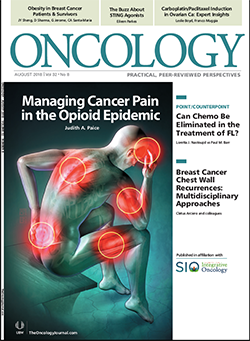
Newsletter
Stay up to date on recent advances in the multidisciplinary approach to cancer.
2 Commerce Drive
Cranbury, NJ 08512
All rights reserved.